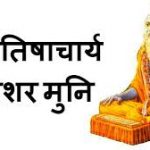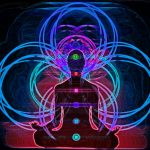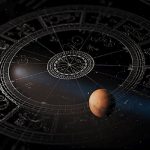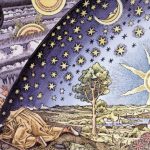Jothishi or Vedic astrology uses nine ‘planets’ or Grahas. Though the Grahas are not planets as per the scientific definition of the word, the word Graha has been translated as ‘planet’. The planets used are the Sun, Moon, Mars, Venus, Mercury, Saturn, Jupiter and the nodes of the Moon (Rahu and Ketu). The planets in Vedic astrology are the ones that are visible to the naked eye. In this scheme of things, Saturn is the furthest planet. Vedic astrology does not use the outer planets.
Can Planets Affect Us
The whole premise of astrology is based on the concept of “as above so below”. Astrology is founded on the belief that the planets all effect us. The entire universe is made of atoms and molecules that are subjected to the laws of physics and metaphysics.
People are also made up of the same elements as the rest of the universe. We are also made up of ‘stardust’. We are made up of both our physical bodies as well as our mind and soul. By this reasoning, we are also subject to the physical and metaphysical influences of the heavenly bodies. Each planet has its own nature and effect upon us. So, the configuration of the planets at the time of birth is the birth chart. The continuous movements of the planets also affect us as transits. Astrologers view these transits from the viewpoint of the Earth.
While the planets each go about their rotations and revolutions in a measured and steady manner, their apparent motion relative to the Earth is different. They seem to move faster, slow down, station and even retrograde. Astrology gives us the keys to decode these apparent motions and relate them to our lives. The Sun and Moon are the luminaries in the chart while Jupiter and Saturn are the slow-moving planets.

The Planets And The Sun
Rashis
The astrologers of olden times identified and named the constellations. The 360 degree backdrop of the sky as visible from the earth is demarcated into twelve divisions. These are the twelve divisions or signs of the Zodiac. Jothishi calls them Rashis. The Rashis are named based on the characteristics of the constellations. The position of the planets against the backdrop of these constellations tells us where the planet is placed in the chart.
The nature of the planets in different schools of astrology have subtle variations across the globe. But, many of the myths and legends that define a planet and its attributes are similar.
Vedic astrology has its own definitions of each of the planets’ natures and influences. Vedic astrology gives the Moon Rashi and Nakshatra more importance than that of the Sun. The Lagna or ascendant is what defines the assignment of houses to each Rashi in a Vedic astrology chart.

Moon
The zodiac sign of the Moon at the time of a person’s birth is their Janma Rashi and the Nakshatra is the Janma Nakshatra. This is one of the key factors in a person’s horoscope as per Vedic astrology. The Dasha sequence of a person are based on the position of the Moon at birth.
The Moon primarily signifies the mind and the emotional characteristics of a person in Vedic astrology. It also signifies the mother or mother figure in a person’s life. It governs the maternal instincts of a person. The relative positions of the Moon and Jupiter to each other in the birth chart are studied for wealth. The Moon affects how we see things in life as well as our thoughts and emotions. So a good and positive Moon will indicate a happy disposition and optimistic outlook in life.
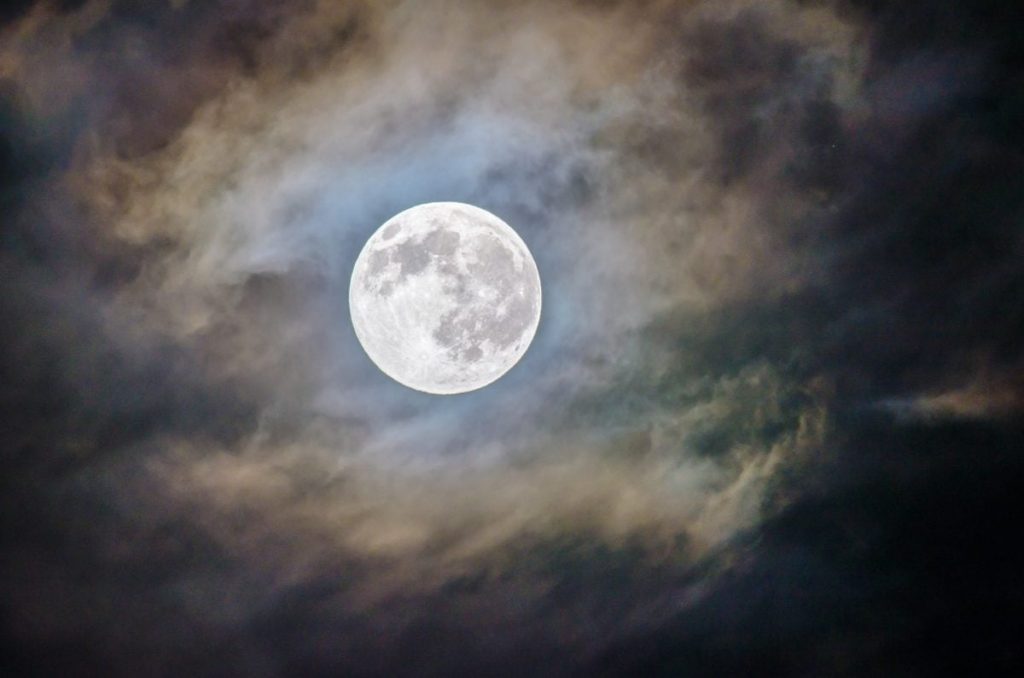
Sun
The Sun signifies the head or leader. It is also the significator of our soul and life force. In a horoscope, the Sun when placed well brings power and fame and if not placed well gives arrogance. It is the indicator of the leadership qualities, individuality, honesty, mental strength, self-respect, ego and ambition of a person. It also signifies the government and boss.
Jupiter
Jupiter is the great benefic in a horoscope. He signifies, growth, development, wisdom, knowledge, religion, philosophy, spirituality, generosity, good morals and good fortune. Jupiter is vast and great and is the ruler of teachers and priests. He has the ability to reduce the negativity and maleficence of a malefic planet. For women, the position of Jupiter in the chart signifies the husband. A good Jupiter shows a happy married life while a difficult placement indicates difficulties in married life. Jupiter rules the fat, liver and bile of the human body.
Saturn
Saturn is the slowest and furthest planet as per Vedic astrology. He is a Karmic planet. Even people who have no deep knowledge of astrology are aware of the transits of Saturn and the hyperbole that surrounds the ill effects of his transits.

The two most well-known transits of Saturn are the Sade Sati and the Dhaiyya periods. The Sade Sati period is when Saturn transits the 12th, 1st and 2nd houses of the Moon chart. Dhaiyya period is when Saturn transits the 4th or 8th from the Moon. Saturn is cold and dry and is indicative of old people. Though he is considered malefic in Vedic astrology his favourable placement can give great wealth and success. When not placed well he can give suffering, sorrow, misery, depression, poverty, delays and hurdles in life. Saturn is also a teacher but he is a hard taskmaster who is strict with his punishments and just in his rewards. He is also the planet of justice and gives a person rewards as per his karma and deeds.
Mars
Mars is a strong, fierce and fiery planet. It governs aggression, passion and masculinity. It governs empty land, real estate, professions such as law enforcement and defence, engineers, builders and warriors. He also indicates accidents, wounds, cuts, scars, surgery and pain. Therefore he also governs surgeons. A well placed Mars indicates determination, passion and good administration skills. A poorly places Mars can give anger management issues and an over-aggressive nature. It is responsible for accidents and wars. Mars governs the bone marrow and blood in a person.
Venus
Venus is also a teacher but he is the teacher of the Demons. He is a benefic and is feminine in nature. Shukra or Venus in Vedic astrology is the ruler of love, romance, luxury, fine things, beauty, attraction, wealth, prosperity and knowledge. Venus gives materialistic happiness and pleasure in marriage. An afflicted Venus gives a lack of physical attractiveness and difficulties in love and married life. It rules the sexual organs, eyes, nose, skin, throat, bladder and kidneys. The planet Venus rules all the arts that involve charm and creativity such as music, writing, singing, designing, theatre, dancing and other artistic pursuits. In a man’s chart, Venus signifies the wife.
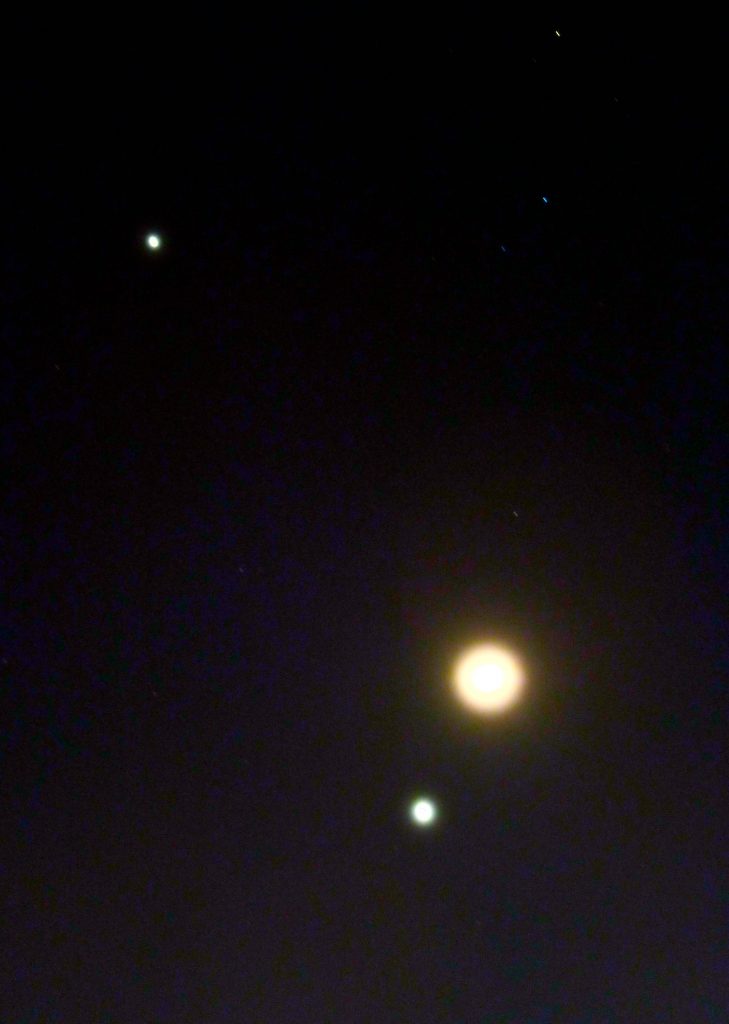
Mercury
Mercury rules logic, thought, cleverness, communication, energy, intelligence, nerves and emotions. Oratory skills, communication technology, wit, humour, intelligence, debate, agreements, poetry, grammar, research and flexible nature are Mercurian. The planet Mercury is also related to business, trade, banking and commerce. People with well placed Mercury are sharp thinkers but are also very indecisive.
Rahu and Ketu – The Nodes of The Moon
Rahu and Ketu are not actual planets but calculated points. They are always at the opposite ends of the horoscope at 180 degrees distance from each other. Rahu is the north node of the Moon and Ketu is the south node of the Moon. They are called shadow planets. It is these points that cause eclipses of the Sun and the Moon.
According to Hindu mythology, Rahu and Ketu are the two halves of the demon Svarbhanu . He disguised himself as a God and took a sip of the nectar of immortality. The Sun and the Moon detected him. They exposed the imposter to Lord Vishnu who cut the demon’s head off. The head portion o Rahu while the tail is Ketu.
Rahu is a planet that has an explosive nature of greatly exaggerating nature. Rahu is malefic and is very powerful and also dirty, unkempt and ugly. It governs shadowy things such as ghosts, spirits, apparitions and black magic. Rahu also represents foreign things, jails, import/export, cheating, poison, jail, magicians, politics, cancer, grandparents and electricity. Photography and film making are also under the purview of Rahu. Though Rahu can cause a great rise to power and wealth when not favourably placed Rahu can cause depression, allergies, infertility, emotional imbalances and confusion.
Ketu has the opposite nature to Rahu. While Rahu is exaggeration, Ketu is detachment. It signifies breakage, destruction, cutting, revolutionaries, terrorists and blackmailers. Due to its non-materialistic nature of detachment, Ketu also symbolises spirituality and enlightenment. When well placed there is a tendency towards spiritualistic and non-material pursuits, high intuition and wisdom. It symbolises solitude, isolation, penance, divorce, communication with spirits, secrets and mysterious knowledge. When not well placed Ketu can cause unnecessary depression, worries, anxiety and poor concentration.




